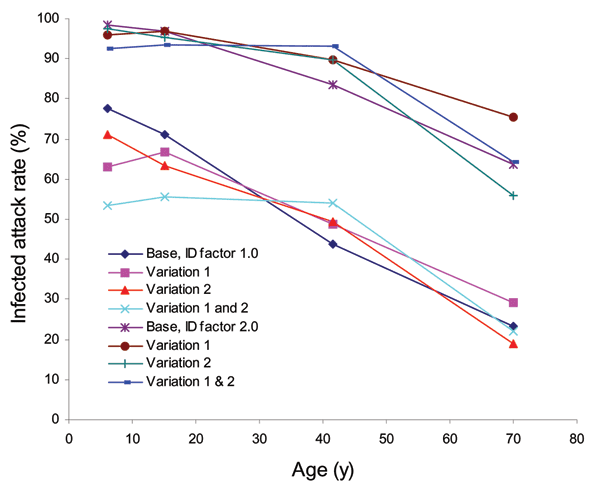Volume 12, Number 11—November 2006
Research
Targeted Social Distancing Designs for Pandemic Influenza
Figure 8

Figure 8. Unmitigated age-specific attack rate results for disease infectivity (ID) factors of 1.0 and 2.0 and base case, variation 1 (removal of relative infectivity and susceptibility), variation 2 (increase in work group frequency of contact to give all children, teenagers, and adults the same overall contact frequencies), and variations 1 and 2 combined. Illness attack rates shown in Figure 6 are half these values.
Page created: October 14, 2011
Page updated: October 14, 2011
Page reviewed: October 14, 2011
The conclusions, findings, and opinions expressed by authors contributing to this journal do not necessarily reflect the official position of the U.S. Department of Health and Human Services, the Public Health Service, the Centers for Disease Control and Prevention, or the authors' affiliated institutions. Use of trade names is for identification only and does not imply endorsement by any of the groups named above.